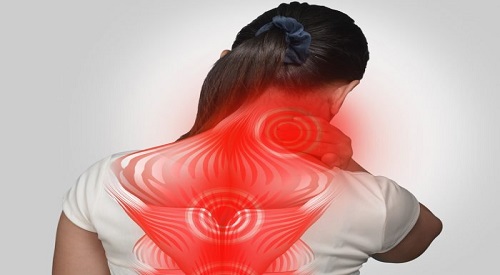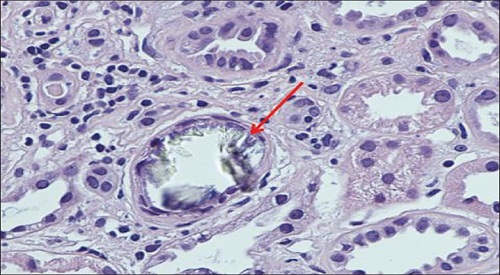What is oxalate muscle pain? This is a type of pain that mostly affects muscle tissues like in the biceps, triceps, deltoid, quadriceps, tibialis anterior and pectoralis (or chest muscle).
The pain often results from an accumulation of oxalate crystals in these tissues.
People suffering from this kind of pain may link it to arthritis or gout or vulvodynia but that should not be the case.
These are actual diseases that cause inflammation and discomfort in specific parts of the body (mostly joints,) while oxalate pains result from the oxalate crystals that get stack in muscle tissues.
Accompanying symptoms of these diseases can help us in separating oxalate muscle pain and these other conditions.
However, when it comes to arthritis symptoms, oxalate arthritis may seem the same as the exact pain triggered by other higher oxalate level situations.
Gout pains may entirely stem from joints unlike these two which mostly emanate from muscle tissues.
For help with managing muscle and body pains, the EASE magnesium SPRAY has worked for some people, check its feedback here.
In other words, oxalate muscle pains result from oxalate overlord which simply means an excess of the chemical in the body system. We’ve already covered what an oxalate is in depth, which in short is a chemical molecule that often prominent in plants and combines with calcium under special conditions to form crystals.
The conditions may range from having an excess of the chemical in the colon to the molecule coming into contact with damaged tissues – with the crystals which are formed this way being extremely irritating and painful – some people call this oxalates foot pain, muscle soreness or cramps.
What Causes Oxalate Muscle Pain?

Source: organicfacts
As the name suggests, oxalate overload in the muscle tissues is what causes the pain. So the question should be what causes oxalate overload in the body? Most times, your body will get oxalate from foods rich in the chemical.
However, it has also been established that the body can generate oxalates on its own if someone is fond of consuming high levels of fructose, or is subjected to high dosages of vitamin C.
(You can also see oxalate and fibromyalgia connection here.)
If you are experiencing muscle pains that you don’t really know what to connect to, maybe you should watch the foods you mostly consume. Foods like spinach, kale, quinoa, almonds, and sweet potatoes are super high in oxalates and if these appear several times in your diet plan, they could be the reason for your painful muscles.
Not only that, but such foods also cause metabolic imbalances when consumed frequently. Yes, these are extremely healthy foods and it’s hard to link them to muscle pains or effects in the body. But you know what, even superfoods like oatmeal, legumes, beets, chia seeds, citrus, and legumes can drive up pain and inflammation.
Oxalate Crystals

Source: MedIND
As stated oxalate crystals are a byproduct of calcium combining with oxalate acid molecules and iron, or Calcium + Oxalic acid + Iron =Calcium Oxalates crystals.
These crystals formed in this way either ends up being deposited into the urinary duct or into the muscle tissues or sometimes on wounded tissues and may cause extreme pain and irritation.
At times oxalate crystals increase inflammation when they recollect on already swollen tissues.
Oxalate muscle pain is one symptom that shows the person is having an overload of the chemical, but the victim might also complain of aching when the crystals lodge in places where they block the movement of other things, like tight places.
Another example of how oxalates do cause pain in the body is when these crystals in form of kidney stones get stuck inside the urinary system.
However, in most cases, the stones get excreted out of the body together with urine as minute crystals.
When the stones are bigger the person would complain of a throbbing pain when urinating and if it is more complicated, surgery to remove the stones may be in the list of corrective treatment. Thus folks with kidney disorders, rheumatoid arthritis, vulvodynia (also known as chronic vulvar pain) and gout are highly advised to avoid high oxalate foods.
People Who are Susceptible to Oxalate Rich Foods Might Include:
- Those suffering from GOUT
- With increased muscular pain or joint pains
- Suffer from vulvodynia
- Suffer from OA or RA
- Diagnosed with Fibromyalgia
- Suffer from intestinal pain
- Those who’ve experienced increased kidney stones, urinary pain
- Suffer from interstitial cystitis
- Have hard signs of tingling or burning hands and or feet
- Experience frequent headaches
- Suffer from brain fog, anxiety or are depressed
- Often feel lack of energy or chronic fatigue
- Have muscle weakness symptoms
- Or oxalate foot pain and muscle cramps
While the list can be longer, the above, led by oxalate muscle pain are often the reasons why your nutritionist may recommend a low oxalate diet, together with other oxalate intolerance symptoms.
Nutrient Imbalances in the Body
The number of times we eat certain foods directly translates to the type and amount of nutrients that dominate the body. In this case, if you eat more of what doctors call oxalate trigger foods you’d expect more of these oxalate intolerance symptoms, talk of muscle twitching, soreness in muscle etc.
Now due to many reasons, people have developed habits where they substitute protein foods like dairy products and nuts with vegetable. Everybody is nowadays after low carb diets which encourage more of green smoothies and less of grains.
Well, if you find yourself on the list and are faced with what you think might be oxalate muscle pain, you might want to re-plan your diet plan.
Research has also noted that oxalates do bind other highly needed nutrients such as copper, manganese, zinc and the obvious one iron. This often leads the body to a shortage of essential nutrients it needs to perform its processes optimally. Some of the processes may include oxidation and peroxidation.
How to Reduce Oxalate in the Diet
Reducing this chemical molecule, in other words, equals to reducing the oxalate muscle pain you’ve been suffering from. While that’s 100% true, still, it’s not recommended that you just cut off oxalates from your meal plans at an instant.
That’s a big NO! That might welcome the consequences of what doctors call oxalate dumping symptoms.
Top on that, instant withdrawal of oxalate might worsen the muscle pains. If you are also having issues with kidney stones or fibromyalgia, they may become super irritating or painful. All because the body has been exposed to oxalate dumping.
Nutritionists advise that you make a strategy in your diet that will help you slowly and gradually reduce those oxalate-rich foods. You can begin by reducing the number of times that you eat spinach, kales and almonds (from 7 times a week to 4, to 3, then to once).
The plan can be stretched over to several months of the gradual removal of these foods, like let’s say 8 months to 1 year.
You might also want to reduce the concentration of oxalate in your foodstuff. Methods to achieve that can be through boiling the food or using enzyme-based supplements like nephure which is said can break down oxalate bonds.
You can either choose one option or both as much as there is a small amount of oxalate driven to your body by the food being reduced to ensure it does not trigger oxalate dumping symptoms.
A good sign that you are effectively reducing the compound in your foods is when you start experiencing ease from your oxalate muscle pain symptoms, which means you can continue with the method down to the time you’ll kick out oxalate-rich foods.
I repeat this the third time again, instant removal might cause severe oxalate dumping symptoms—so it’s highly recommended that you involve your doctors suspect oxalate muscle pains for a strategic treatment of your oxalate susceptibility.
[Update]
Remedy Suggestions to Oxalate Muscle Pain
The first and most recommended solution when you suspect the pains in your muscle are caused by oxalate crystal accumulation in your tissues is: seek medical advice. A nutritionist would be the best person to attend to your case but a kidney stone expert can as well do. That is if you don’t specifically have an oxalate specialist around.
Taking in a lot of water on an empty stomach would also help to avoid crystal formation as well as dissolve some oxalate crystals in your system. You might as well use over-the-counter remedies like muscle pain rubs, balms or gels to help calm down as you wait to present the condition to your doctor.
The obvious other route to eliminate your pain is just keeping off oxalate-rich foods like spinach, oatmeal, and kale if you have a sensitivity to the chemical, or if your gut health is wanting that it allows unwanted minerals to be absorbed together with food particles.
Be the first to comment